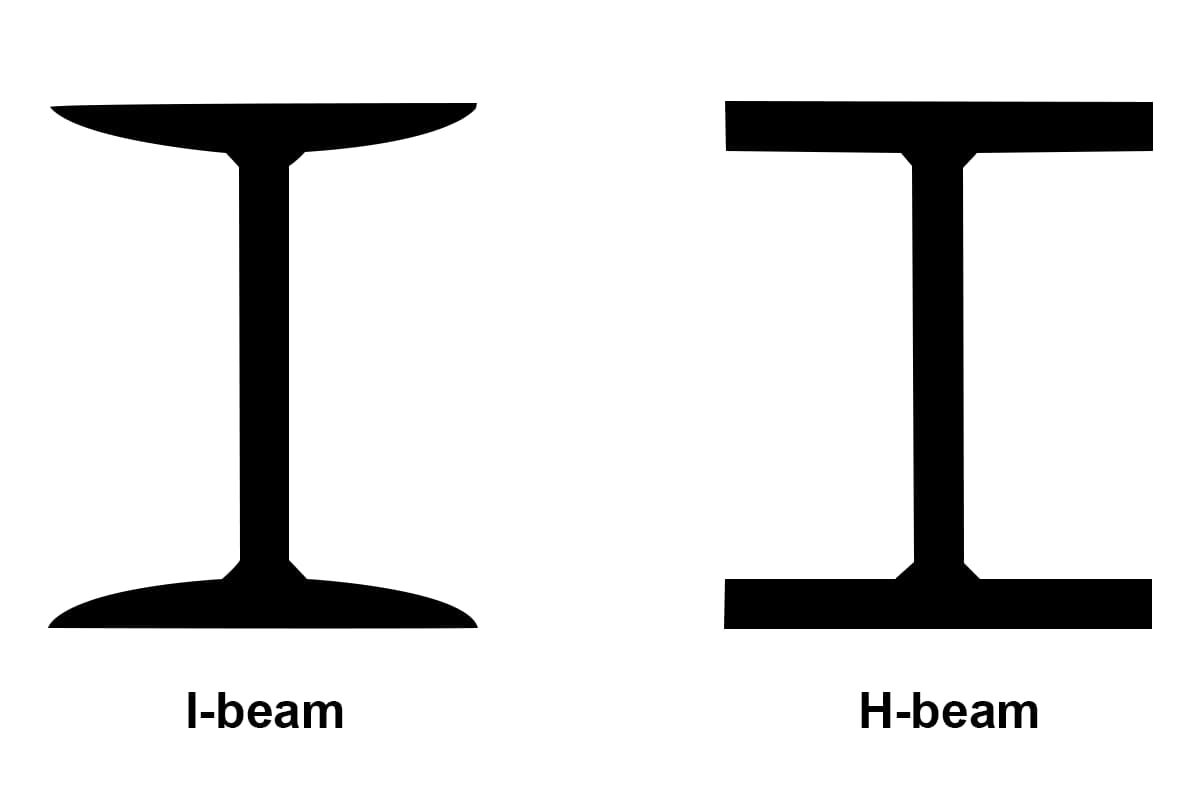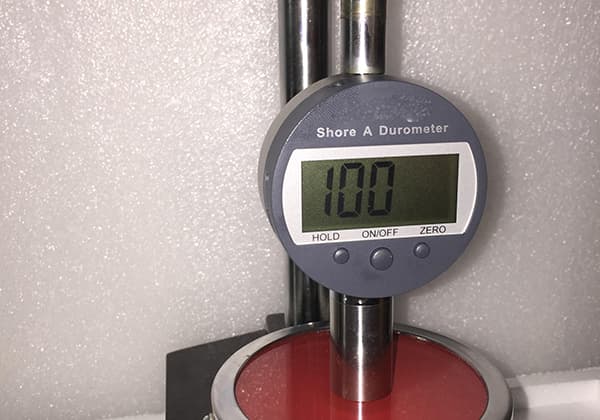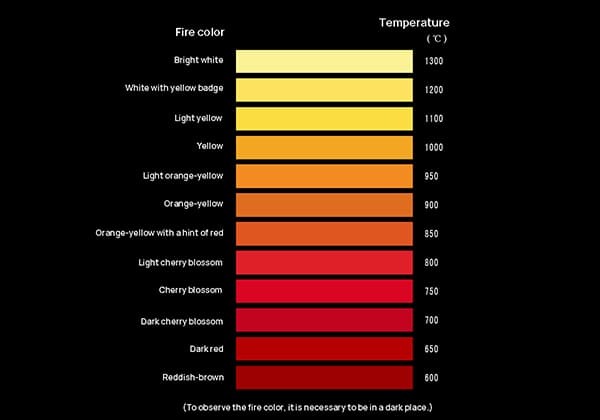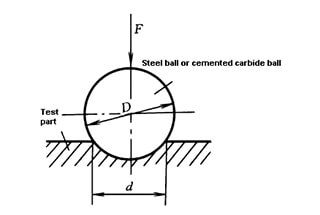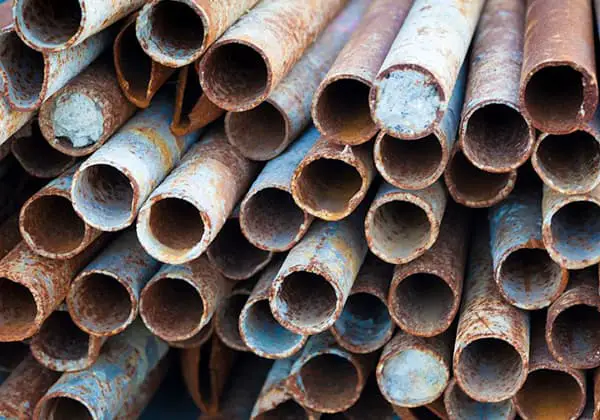
Have you ever wondered about the differences between brass and copper? In this blog post, we’ll dive into the fascinating world of these two metals, exploring their unique properties, applications, and how they compare to each other. As an experienced mechanical engineer, I’ll share my insights and knowledge to help you understand the key distinctions between brass and copper. Get ready to learn about their composition, physical characteristics, and how they are used in various industries.
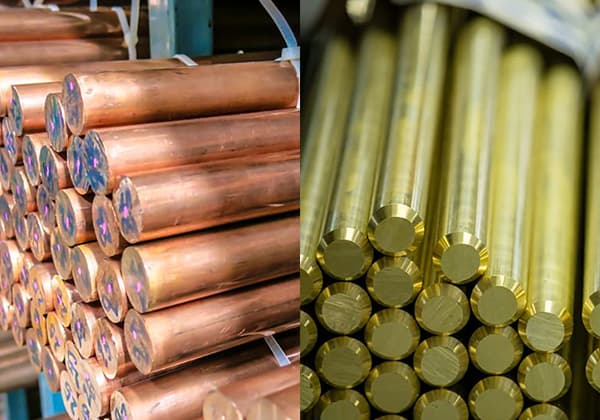

Brass is an industrial pure copper. Due to its rose-red color and the fact that its surface turns purple after the formation of an oxide film, it is generally referred to as brass or red copper.
It is a copper alloy that contains a certain amount of oxygen, thus also known as oxy-copper, and can sometimes be regarded as a copper alloy.
Red copper has excellent electrical conductivity and thermal conductivity, and is extremely malleable. It is easy to be processed by hot or cold pressure, and is widely used in the manufacture of products that require good electrical conductivity, such as wires, cables, electric brushes, and special electro-erosion copper for electric spark.
Copper has the second highest electrical conductivity and thermal conductivity after silver, and is widely used in the production of conductive and heat-conductive materials.
Copper has good corrosion resistance in the atmosphere, seawater, certain non-oxidizing acids (hydrochloric acid, dilute sulfuric acid), alkalis, salt solutions and a variety of organic acids (acetic acid, citric acid), and is used in the chemical industry.
In addition, copper has good weldability and can be made into various semi-finished products and finished products through cold or hot plasticity processing.
In the 1970s, the output of copper exceeded the total output of other types of copper alloys.
Copper is named for its purple-red color. It is not necessarily pure copper, and sometimes a small amount of deoxidizing element or other elements are added to improve the material and performance, so it is also classified as a copper alloy.
Copper materials can be divided into four categories based on their composition: ordinary copper (T1, T2, T3), oxygen-free copper (TU1, TU2, and high-purity, vacuum oxygen-free copper), deoxidized copper (TUP, TUMn), and special copper with a small amount of alloy elements added (arsenic copper, tellurium copper, silver copper).
Copper has the second highest electrical conductivity and thermal conductivity after silver, and is widely used in the production of conductive and heat-conductive materials.
Copper has good corrosion resistance in the atmosphere, seawater, certain non-oxidizing acids (hydrochloric acid, dilute sulfuric acid), alkalis, salt solutions and a variety of organic acids (acetic acid, citric acid).
Common copper alloys are classified into three categories: brass, bronze, and white copper.
Properties Classification:
Copper is a relatively pure type of copper and can generally be regarded as pure copper with good electrical conductivity and ductility, but lower strength and hardness. Purple copper has excellent thermal conductivity, ductility, and corrosion resistance.
Trace impurities in purple copper have a serious impact on the electrical conductivity and thermal conductivity of copper.
Titanium, phosphorus, iron, silicon and other elements can significantly reduce electrical conductivity, while cadmium, zinc and other elements have little effect.
Sulfur, selenium, tellurium, and other elements have a small solid solubility in copper, and can form brittle compounds with copper, which has little effect on electrical conductivity but can reduce processing plasticity.
Purple copper has good corrosion resistance in the atmosphere, seawater, certain non-oxidizing acids (hydrochloric acid, dilute sulfuric acid), alkalis, salt solutions, and a variety of organic acids (acetic acid, citric acid), and is used in the chemical industry.
In addition, purple copper has good weldability and can be made into various semi-finished products and finished products through cold or hot plasticity processing.
In the 1970s, the output of purple copper exceeded the total output of other types of copper alloys.
Physical Properties:
Trace impurities in purple copper have a serious impact on the electrical conductivity and thermal conductivity of copper.
Titanium, phosphorus, iron, silicon, and other elements can significantly reduce electrical conductivity, while cadmium, zinc, and other elements have little effect.
Oxygen, sulfur, selenium, tellurium, and other elements have a small solid solubility in copper and can form brittle compounds with copper, which has little effect on electrical conductivity but can reduce processing plasticity.
When ordinary purple copper is heated in a reducing atmosphere containing hydrogen or carbon monoxide, hydrogen or carbon monoxide easily reacts with the oxide copper (Cu2O) at the grain boundary to produce high-pressure water vapor or carbon dioxide gas, which can cause copper to rupture.
This phenomenon is commonly known as “hydrogen disease” of copper.
Oxygen is harmful to the weldability of copper. Bismuth or lead forms low-melting eutectic with copper, causing hot brittleness of copper; while brittle bismuth forms a film-like distribution at the grain boundary, causing cold brittleness of copper.
Phosphorus can significantly reduce the electrical conductivity of copper, but can improve the flowability of copper liquid and welding properties. Adequate amounts of lead, tellurium, sulfur, and other elements can improve machinability.
The tensile strength of annealed purple copper plates at room temperature is 22-25 kgf/mm2, elongation is 45-50%, and the Brinell hardness (HB) is 35-45.
The thermal conductivity coefficient of pure copper is 386.4 W/(m·K).
Copper is widely used in more applications than pure iron. 50% of copper is electrolytically purified into pure copper for use in the electrical industry.
The copper used here must be very pure, with a copper content of more than 99.95%, and a very small amount of impurities, especially phosphorus, arsenic, aluminum, and others, which can significantly reduce the electrical conductivity of copper.
It is mainly used to make electrical equipment such as generators, buses, cables, switches, transformers, as well as heat transfer equipment such as heat exchangers for pipelines, solar heating devices, flat plate collectors, and other heat conductive materials.
The oxygen in copper (easily mixed with a small amount of oxygen during copper refining) has a great impact on the electrical conductivity.
Copper used in the electrical industry must generally be oxygen-free copper. In addition, impurities such as lead, antimony, and bismuth will prevent the crystallization of copper from bonding together, causing hot brittleness, and affecting the processing of pure copper.
This high-purity copper is generally refined by electrolysis: impure copper (i.e. crude copper) is used as an anode, and pure copper is used as a cathode, with copper sulfate solution as the electrolyte.
When the current passes, the impure copper on the anode gradually melts, and the pure copper precipitates on the cathode. The copper refined in this way can have a purity of up to 99.99%.
Purple copper is also used in the production of short-circuit rings for motors, induction heaters, high-power electronic components, wiring terminals, and other components.
Purple copper is also used in furniture and decorations such as doors, windows, and handrails.
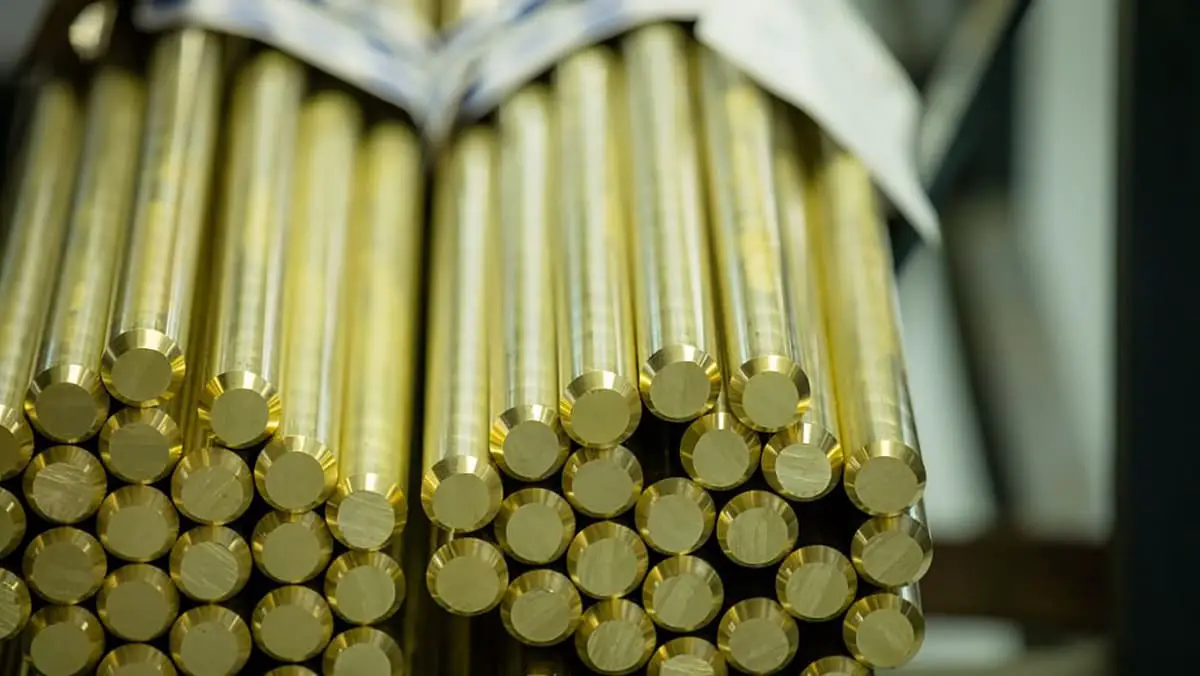
Brass is an alloy composed of copper and zinc. If it is composed only of copper and zinc, it is called ordinary brass.
If it is composed of more than two elements, it is called special brass, such as copper alloys composed of lead, tin, manganese, nickel, lead, iron, and silicon.
Brass has strong wear resistance. Special brass, also known as special alloy brass, has high strength, large hardness, strong resistance to chemical corrosion, and outstanding mechanical properties for cutting processing.
Seamless copper tubes made of brass have soft texture and strong wear resistance, and can be used in heat exchangers, condensers, low-temperature pipelines, submarine transport pipes, and for manufacturing sheets, bars, rods, pipes, and casting parts, etc.
The copper content in brass ranges from 62% to 68%, and it has strong plasticity, making it suitable for manufacturing pressure-resistant equipment.
Brass can be classified into two categories: ordinary brass and special brass, based on the type of alloying elements present in it. Brass used for pressure processing is called deformation brass.
(1) Room temperature microstructure of ordinary brass
Ordinary brass is a binary alloy of copper and zinc, and its zinc content varies greatly, resulting in a significant difference in its room temperature microstructure.
According to the Cu-Zn binary phase diagram (Figure 6), the room temperature microstructure of brass can be divided into three types: brass with zinc content below 35%, which consists of a single-phase α solid solution at room temperature and is called α-brass; brass with zinc content ranging from 36% to 46%, which consists of a two-phase (α+β) microstructure at room temperature and is called (α+β) brass (two-phase brass); brass with zinc content over 46% to 50%, which consists of only β phase microstructure at room temperature and is called β-brass.
(2) Pressure processing properties
Single-phase α-brass (from H96 to H65) has good ductility and can withstand cold and hot working. However, single-phase α-brass is prone to mid-temperature brittleness during hot working such as forging, and the specific temperature range varies with the zinc content, generally between 200℃ and 700℃.
Therefore, the temperature during hot working should be above 700℃. The main reason for the mid-temperature brittleness in the α-phase region of the Cu-Zn alloy system is that there are two ordered compounds, Cu3Zn and Cu9Zn, in the α-phase region of the alloy, which undergo ordered transformation during mid-to-low-temperature heating, causing the alloy to become brittle.
In addition, harmful impurities such as lead and bismuth exist in trace amounts in the alloy and form low-melting eutectic films distributed in grain boundaries, causing intergranular fracture during hot working. Practice has shown that the addition of a trace amount of cerium can effectively eliminate mid-temperature brittleness.
Two-phase brass (from H63 to H59) consists of both α-phase and β solid solution based on the electron compound CuZn. β phase has high ductility at high temperatures, while β’ phase (ordered solid solution) at low temperatures is hard and brittle. Therefore, (α+β) brass should be forged in a hot state.
β-brass with zinc content greater than 46% to 50% is hard and brittle, and cannot be processed under pressure.
(3) Mechanical properties
Due to the difference in zinc content, the mechanical properties of brass vary. Figure 7 shows the curve of the mechanical properties of brass changing with the zinc content. For α-brass, as the zinc content increases, both σb and δ increase continuously. For (α+β) brass, the room temperature strength increases continuously until the zinc content increases to about 45%.
If the zinc content is further increased, the brittle r-phase (a solid solution based on Cu5Zn8 compound) appears in the alloy microstructure, and the strength decreases sharply. The room temperature plasticity of (α+β) brass decreases with the increase of zinc content. Therefore, copper-zinc alloys with zinc content over 45% have no practical value.
In order to improve the corrosion resistance, strength, hardness, and machinability of brass, a small amount of tin, aluminum, manganese, iron, silicon, nickel, lead, and other elements (generally 1% to 2%, a few up to 3% to 4%, and extremely rare up to 5% to 6%) are added to the copper-zinc alloy to form a ternary, quaternary, or even quinary alloy, which is called complex brass or special brass.
(1) Zinc equivalent coefficient
The microstructure of complex brass can be calculated based on the “zinc equivalent coefficient” of the added elements in brass. Because adding a small amount of other alloying elements to copper-zinc alloys usually only shifts the α/(α+β) phase region in the Cu-Zn phase diagram to the left or right.
Therefore, the microstructure of special brass is usually equivalent to the microstructure of ordinary brass with increased or decreased zinc content.
For example, the microstructure of adding 1% silicon to the Cu-Zn alloy is equivalent to the alloy microstructure with 10% more zinc in the Cu-Zn alloy.
Therefore, the “zinc equivalent” of silicon is 10. Silicon has the highest “zinc equivalent coefficient,” which significantly shifts the α/(α+β) phase boundary in the Cu-Zn system towards the copper side, thus greatly reducing the α phase region. The “zinc equivalent coefficient” of nickel is a negative value, which expands the α phase region.
(2) Properties of special brass
The α and β phases in special brass are multi-element complex solid solutions, which have a greater strengthening effect than the simple Cu-Zn solid solutions in ordinary brass.
Although the zinc equivalent is the same, the properties of multi-element solid solutions and simple binary solid solutions are different. Therefore, a small amount of multi-element strengthening is one way to improve the alloy properties.
(3) The microstructure and deformation properties of several commonly used special deformation brasses.
Lead brass: Lead is not actually soluble in brass, but exists as free particles distributed on grain boundaries. There are two types of lead brasses based on their microstructure: α and (α+β). Due to the harmful effect of lead, α lead brass has low hot plasticity and can only undergo cold deformation or hot extrusion. (α+β) lead brass has better plasticity at high temperatures and can be forged.
Tin brass: Adding tin to brass can significantly improve the alloy’s heat resistance, especially its ability to resist corrosion in seawater, hence tin brass is also called “naval brass”. Tin can dissolve into the copper-based solid solution, providing solid solution strengthening. However, as the tin content increases, the brittle r phase (CuZnSn compound) may appear in the alloy, which is not conducive to the plastic deformation of the alloy.
Therefore, the tin content in tin brass is generally in the range of 0.5% to 1.5%. Commonly used tin brasses include HSn70-1, HSn62-1, and HSn60-1. The former is an α alloy with high plasticity and can undergo cold and hot pressure processing. The latter two alloys have (α+β) two-phase microstructure, and a small amount of r phase is often present, with low room temperature plasticity, and can only undergo deformation in the hot state.
Manganese brass: Manganese has a relatively high solubility in solid state brass. Adding 1% to 4% manganese to brass can significantly improve the alloy’s strength and corrosion resistance without reducing its plasticity. Manganese brass has (α+β) microstructure. Commonly used manganese brasses include HMn58-2, which have good deformation properties under cold and hot conditions.
Iron brass: In iron brass, iron precipitates as rich iron phase particles, which serve as nucleation sites and refine the grains, and can also prevent the growth of recrystallized grains, thereby improving the alloy’s mechanical and processing properties. The iron content in iron brass is usually below 1.5%, and its microstructure is (α+β), with high strength and toughness, good plasticity at high temperatures, and deformability in the cold state. The commonly used grade is Hfe59-1-1.
Nickel brass: Nickel and copper can form a continuous solid solution, significantly expanding the α phase region. Adding nickel to brass can significantly improve the alloy’s corrosion resistance in the atmosphere and seawater. Nickel can also increase the recrystallization temperature of brass and promote the formation of finer grains.
HNi65-5 nickel brass has a single-phase α structure and exhibits good plasticity at room temperature. It can also be deformed in the hot state, but the content of impurity lead must be strictly controlled, otherwise the alloy’s hot workability will be severely degraded.
| Grade | Chemical composition | ||||||
| QB | GB/JIS/UNS | Cu | Pb | Zn | Fe | Sn | Total impurities |
| C2501 | JIS C3501 | 60.0-64.0 | 0.7-1.7 | REM | <=0.2 | Fe+Sn<=0.4 | – |
| C3601 | JIS C3601 | 59.0-63.0 | 1.8-3.7 | REM | <=0.3 | Fe+Sn<=0.5 | – |
| C3602 | JIS C3602 | 59.0-63.0 | 1.8-3.7 | REM | <=0.5 | Fe+Sn<=1.2 | – |
| C3603 | JIS C3603 | 57.0-61.0 | 1.8-3.7 | REM | <=0.35 | Fe+Sn<=0.6 | – |
| C3604 | JIS C3604 | 57.0-61.0 | 1.8-3.7 | REM | <=0.5 | Fe+Sn<=1.2 | – |
| C3605 | JIS C3605 | 56.0-60.0 | 1.8-3.7 | REM | <=0.5 | Fe+Sn<=1.2 | – |
| C3771 | JIS C3771 | 57.0-61.0 | 1.8-3.7 | REM | Fe+Sn<=1.0 | – | |
| 360 | ASTM C36000 | 60.0-63.0 | 2.5-3.7 | REM | <=0.35 | Remained | |
| H62 | H62/JIS C2800 | 60.5-63.5 | <=0.08 | REM | <=0.15 | – | <=0.5 |
| H65 | H65/JIS C2700 | 63.5-68.0 | <=0.03 | REM | <=0.1 | – | <=0.3 |
| H68 | H68/JIS C2600 | 67.0-70.0 | <=0.03 | REM | <=0.1 | – | <=0.3 |
| H63 | H63 | 62.0-65.0 | <=0.08 | REM | <=0.15 | – | <=0.5 |
| H90 | H90 | 88.0-91.0 | <=0.03 | REM | <=0.1 | – | <=0.2 |
| H96 | H96 | 95.0-97.0 | <=0.03 | REM | <=0.1 | – | <=0.2 |
| H62F | H62F | 60.0-63.0 | 0.5-1.2 | REM | <=0.2 | – | <=0.75 |
| HPb59-1 | HPb59-1 | 57.0-60.0 | 0.8-1.9 | REM | <=0.5 | – | <=1.0 |
| HPb58-2 | – | 57.0-59.0 | 1.5-2.5 | REM | <=0.5 | – | <=1.0 |
| Grade | Processing bar properties | Processing wire performance | |||||
| State | Tensile strength | Elongation rate (%) | Hardness | State | Tensile strength | Elongation rate (%) | |
| HPb63-3 | Y(H) | >=490 | >=3 | – | Y(H) | 390-610 | >=3 |
| >=450 | >=8 | – | 390-600 | >=3 | |||
| >=410 | >=10 | – | 390-590 | >=4 | |||
| Y(H) | >=390 | >=10 | – | Y2(1/2h) | 570-735 | – | |
| >=360 | >=14 | – | |||||
| H62F | Y(H) | >=380 | >=12 | – | Y2(1/2h) | 390-590 | >=8 |
| 390-590 | >=10 | ||||||
| >=340 | >=15 | – | 370-570 | >=12 | |||
| 350-560 | >=15 | ||||||
| HPb59-1 HPb58-2 HPb58-3 | Y(1/2h) | >=450 | >=8 | – | Y2(1/2h) | 390-590 | – |
| >=420 | >=10 | – | 360-570 | – | |||
| >=390 | >=12 | – | Y(H) | 490-720 | – | ||
| >=370 | >=16 | – | 400-640 | – | |||
| H62 H63 | Y2(1/2h) | >=370 | >=15 | – | M(0) | >=335 | >=18 |
| >=315 | >=26 | ||||||
| >=300 | >=36 | ||||||
| Y2(1/2h) | >=410 | – | |||||
| >=355 | >=7 | ||||||
| >=335 | >=15 | ||||||
| >=335 | >=20 | – | Y1(3/4H) | 540-785 | |||
| 390-685 | |||||||
| 350-550 | |||||||
| Y(H) | 685-980 | ||||||
| 540-835 | |||||||
| 500-700 | |||||||
| H65 | Y(H) | >=390 | – | – | M(0) | >=325 | >=18 |
| >=295 | >=28 | ||||||
| >=275 | >=38 | ||||||
| Y2(1/2h) | >=400 | – | |||||
| >=375 | >=7 | ||||||
| >=350 | >=15 | ||||||
| M(0) | >=295 | >=40 | – | Y1(3/4H) | 490-735 | – | |
| 490-785 | – | ||||||
| 470-670 | – | ||||||
| Y(H) | 635-885 | – | |||||
| 490-785 | – | ||||||
| 470-670 | – | ||||||
| H68 | Y2(1/2h) | >=370 | >=15 | – | M(0) | >=355 | >=18 |
| >=395 | >=30 | ||||||
| >=275 | >=42 | ||||||
| >=315 | >=25 | – | Y2(1/2h) | >=390 | – | ||
| >=345 | >=10 | ||||||
| 310-510 | – | ||||||
| >=295 | >=30 | – | Y1(3/4H) | 490-735 | – | ||
| 345-635 | – | ||||||
| 310-510 | – | ||||||
| M(0) | >=295 | >=45 | – | Y(H) | 685-930 | – | |
| 540-835 | – | ||||||
| 490-685 | – | ||||||
| C3501 | – | – | – | – | 0 | >=295 | >=20 |
| 1/2H | 345-440 | >=10 | |||||
| H | >=420 | – | |||||
| C3601 | 0 | >=295 | >=25 | – | 0 | >=315 | >=20 |
| 1/2H | >=345 | – | >=HV95 | H | >=345 | – | |
| H | >=450 | – | >=HV130 | H | >=345 | – | |
| C3602 | F | >=315 | – | >=HV75 | F | >=365 | – |
| C3603 | 0 | >=315 | >=20 | – | 0 | >=315 | >=20 |
| 1/2H | >=365 | – | >=HV100 | 1/2H | >=365 | – | |
| H | >=450 | – | >=HV130 | H | >=450 | – | |
| C3604 | F | >=335 | – | >=HV80 | F | >=420 | – |
| C3605 | |||||||
| C3771 | F | >=315 | >=15 | – | F | >=365 | >=10 |
| 360 | Y2(1/2h) | >=450 | >=8 | – | Y2(1/2h) | 420-600 | – |
| >=410 | >=12 | – | 375-590 | – | |||
| >=390 | >=18 | – | 360-550 | – | |||
| H | >=490 | – | – | H | 520-735 | – | |
| >=450 | – | – | 440-710 | – | |||
| >=420 | – | – | 410-610 | – | |||
| H90 H96 | Y(H) | >-=265 | >=4 | – | Y(H) | 470-800 | – |
| 400-720 | – | ||||||
| >=245 | >=6 | – | 380-620 | – | |||
| M(0) | >=205 | >=35 | – | M(0) | >=315 | >=32 | |
| >=250 | >=38 | ||||||
| >=230 | >=45 | ||||||
1.1 Classification based on the form of existence in nature
Native copper: copper content is above 99%, but reserves are extremely scarce;
Copper oxide ore: also rare;
Copper sulfide ore: copper content is extremely low, generally around 2-3%.
2. Classification based on production process
Copper concentrate: ore with higher copper content selected before smelting.
Blister copper: product obtained after smelting copper concentrate, with copper content between 95-98%.
Pure copper: copper with a content of over 99% obtained after pyrometallurgical refining or electrolysis. Pyrometallurgical refining can produce pure copper with a purity of 99-99.9%, while electrolysis can make the purity of copper reach 99.95-99.99%.
3. Classification based on the main alloying elements
Brass: copper-zinc alloy;
Bronze: copper-tin alloy, etc. (except for zinc-nickel alloy, alloys with other added elements are called bronze);
Cupronickel: copper-cobalt-nickel alloy.
4. Classification based on product form: copper pipes, copper rods, copper wires, copper sheets, copper strips, copper bars, copper foil, etc.

